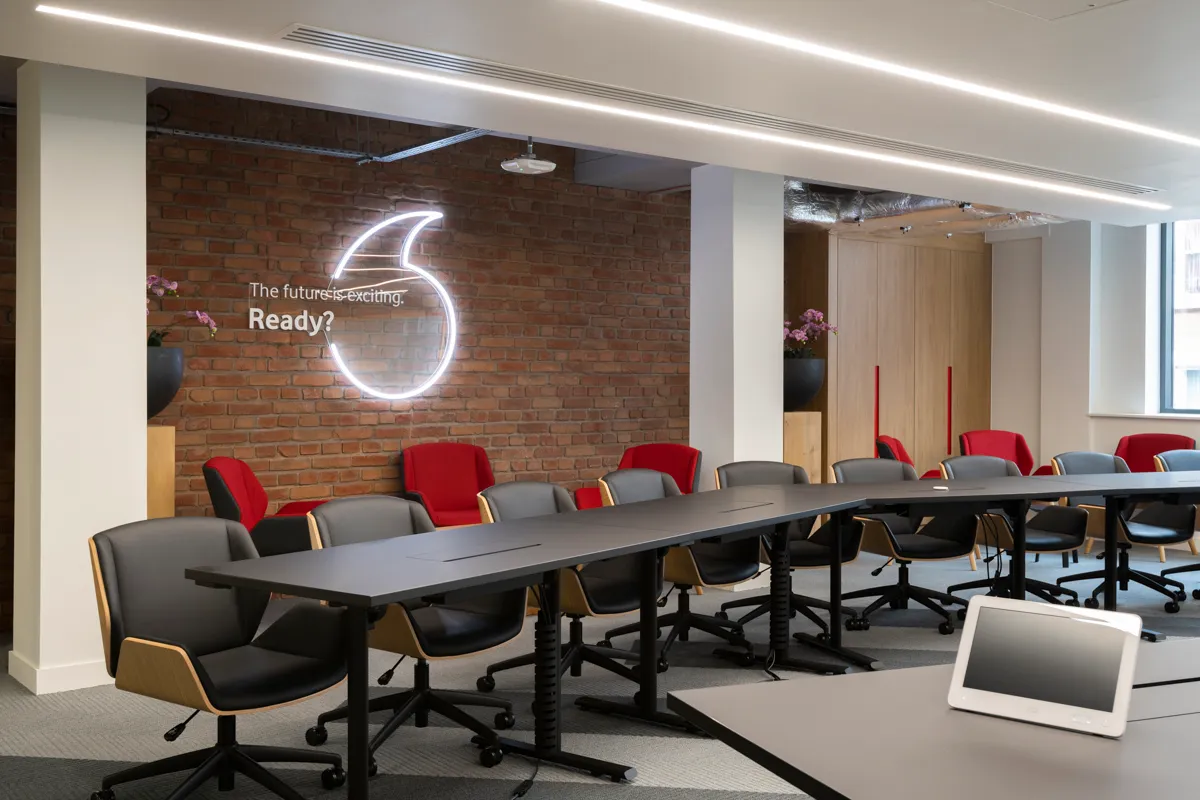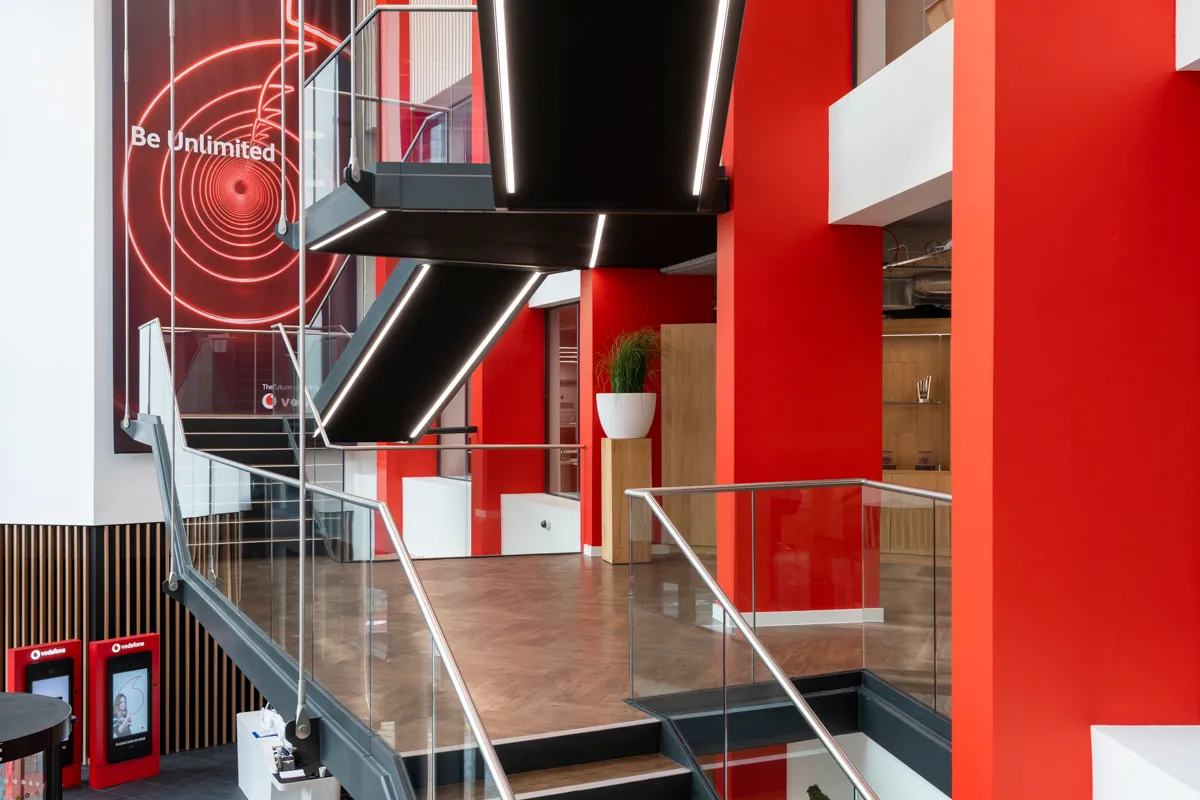How Furniture Consultants Enhance Brand Image Through Design
Furniture is the crucial final stage in workplace design for brand enhancement. How do consultants approach this nuanced art?


Written by
Fritha Selwyn-Jones
Contents
How do we translate brand image into the workplace? A brand's identity has to permeate the experience of the environment as a whole. This goes deeper than slapping logos on the walls and kitchenware. What is the brand's tone? How can this tone be experienced in a space?
This is an aspect of furniture consultancy that is often overlooked. Experts in furnishing workplaces not only work to meet the functional needs of the space’s users but also to reflect the brand and enhance the company’s image. Ultimately, it’s about incorporating design choices that echo the brand's culture and values and leave a lasting impression.
Read on as we dive into brand enhancement through furniture in the workplace.
Reflecting Company Values
Clients, employees, visitors, stakeholders of all kinds—all these people who enter the space will have an experience and a memory of it. It’s important that we reinforce the brand image to all of them? But why?
To protect brand reputation
To build positive relationships
To reinforce a good atmosphere
To make people want to return
A good furniture consultant will incorporate company values into their design strategy so that each element resonates with the brand identity and ethos.
How do furniture consultants achieve this?
Approach | Benefit |
Collaborating closely with management | Ensures that the design accurately reflects company values |
Conducting thorough research on the brand | Deepens understanding of brand identity and culture |
Using custom-designed furniture pieces | Creates a unique and tailored environment, exactly befitting the brand |
Incorporating brand colours and themes | Enhances visual coherence and brand recognition |
Designing multifunctional and adaptable spaces | Promotes flexibility and future-proofing through brand evolution or rebranding |
Prioritising ergonomics and comfort | Boosts employee well-being and productivity |
Engaging with employees for feedback | Ensures practical needs and preferences are met |
Thoroughly understanding a company’s culture by learning about it directly from leadership teams, management, and key members of staff helps consultants convey the image the brand wants to perpetuate. Market research in customer segments, with stakeholders, and within its industry position helps to gain an idea of how the brand is truly perceived and where work needs to be done to align these perceptions with the desired identity.
For example, a tech company known for innovation and environmental stewardship may want a workspace that looks sleek, modern, and contemporary. Creating a space like this with sustainable materials, biophilic elements, and energy-conserving systems aligns with the brand on a sub-surface level to truly reinforce the company's spirit.

Creating Signature Office Spaces
A signature office space needs to be unique and memorable: an environment that stands out to anyone who visits. Clients who attend meetings in a number of offices should be able to recall this one positively. Visitors should leave with a good impression of the business. Employees should want to return to work next week.
To achieve this, furniture consultants should encapsulate the brand’s identity with distinctive furniture choices that complement the office design as a whole. What are some techniques they use?
Storytelling: using pieces of furniture that tell a brand’s story or provide hints about its heritage.
Custom pieces: commissioning bespoke furniture that speaks to nuanced elements of the brand that can’t be found in pre-existing items.
Cultural references: incorporating colours, materials, patterns, and imagery that reference the cultural roots of the brand.
Thematic cohesion: defining themed sections or areas in the space that mirror distinct aspects of the brand.
Iconic elements: creating unique, bespoke centrepiece items and elements as lynchpin design elements representative of the brand which are consistent across a variety of areas.
Making a Lasting First Impression
First impressions could not be more important. Even if we don’t want to judge a book by its cover, we can’t help it. As humans, we are programmed to make a judgement in the first few seconds based on what we experience with our senses.
Studies have shown us that it’s in the first seven seconds of meeting someone that we make a judgement. This can easily be applied to new environments we visit too, and the things they tell us about the people running and using them.
It’s important that we keep this in mind when it comes to workplace furnishing and design, particularly in reception areas, waiting rooms, and pathways: the spaces people see when they first arrive or when they’re waiting for the main event of the visit.
The Psychological Impact of Furniture
We need to carefully consider the psychology of furniture choice in how it affects the users of the space—from first impressions to effects over time. This is a combination of art and science to produce a mood-enhancing impact.
Element | Impact | Evidence |
Colour | Colours significantly affect emotional responses and mood. Warm colours are energetically stimulating while cool colours are relaxing. | A study on environmental sensitivity in different coloured office interiors found that workers responded to warm colours with a higher level of productivity. |
Texture | Textures and materials evoke different sensory responses and emotions. Natural materials like wood tend to be more comforting while metals feel more clinical. | A study on the psychological effects of interiors with different qualities of wood found that more wood in the space promoted comfort and relaxation and even impacts physiological responses like lowering heart rate. |
Spatial Arrangement | Layout impacts socialisation and privacy and affects communication, collaboration, and stress. | A body of work on personal space in design found that preferences for distances for interaction between units of furniture vary widely, as these influence comfort and social behaviour. |
Lighting | Natural and artificial lighting have different effects on mood. Lighting hues and levels can influence energy levels and affect eye strain and fatigue. | A study on performance and wellbeing in open-plan offices found that good lighting improved performance and elevated mood. |

The ROI of Investing in a Furniture Consultant
The effects of branding in a workplace can be quite subtle. The psychological impact of the first impression, the resounding memory of the environment, the connections between sensory experiences and the message and story of the company—all of this makes up branding in the workplace, and the success of this trickles down into boardroom meetings, stakeholder visits, and day-to-day operations.
Employing the transformative skills of a furniture consultant is an investment. So how can brands be sure they’ll see a return on that investment? It starts with how workplace furnishing ROI is measured.
Key Performance Indicator | Improvement in Brand Image |
Employee Productivity | Enhanced productivity reflects a brand that values efficiency and innovation, reinforcing a positive brand image. |
Employee Engagement and Satisfaction | High engagement and satisfaction levels project a brand that prioritises employee well-being and fosters a positive work culture. |
Health and Well-being | A healthy work environment showcases the brand’s commitment to employee welfare and improves its reputation as a caring employer. |
Space Utilisation | Efficient use of space demonstrates the brand's commitment to sustainability and smart resource management. |
Client and Visitor Impressions | Positive client and visitor feedback reinforces the brand’s image as professional and client-focused. |
Brand Alignment | Consistent and cohesive brand elements in the workspace strengthen the overall brand identity and message. |
Financial Metrics | Financial stability and growth, attributed to improved workspace efficiency, enhance the brand’s image as successful and reliable. |
Employee Retention and Attraction | Low turnover and the ability to attract top talent reflect a brand that is desirable and values its employees. |
Operational Efficiency | Smooth operations and reduced bottlenecks project a brand that is competent and efficient. |
Environmental Impact | Sustainable practices in the workspace enhance the brand’s reputation as environmentally responsible and forward-thinking. |
These changes can be measured in a variety of quantitative ways, including:
Output per employee
Changes in revenue
Engagement and satisfaction feedback
Changes in absenteeism and sick days
New and repeat visits
While furniture is the element of any workplace most interacted with, it largely goes unnoticed in the context of branding. However, furniture is the crucial finishing touch on a workplace transformation that should not be overlooked. Brand enhancement with strategic furniture choices can be a subtle and nuanced art, with significant but sometimes well-hidden results. Talk to us if this sounds like something your workplace can benefit from.
Published on
May 27, 2024
Related Articles










